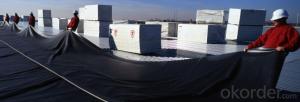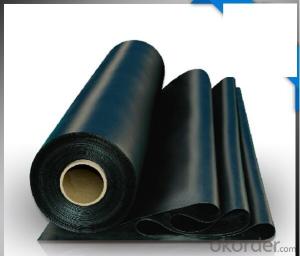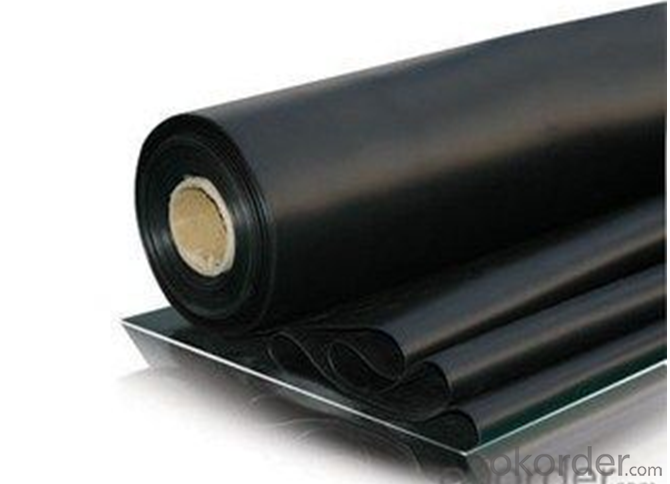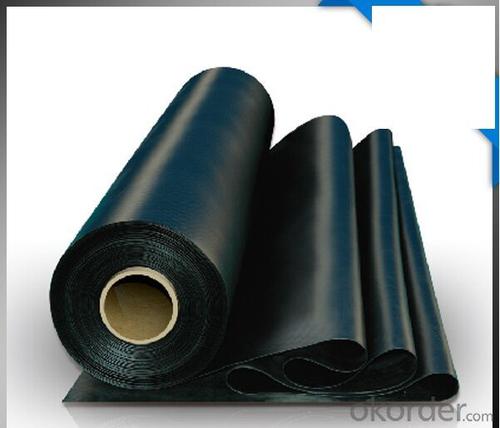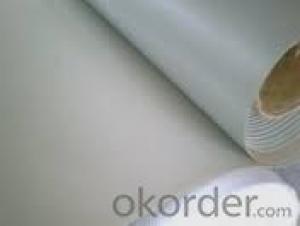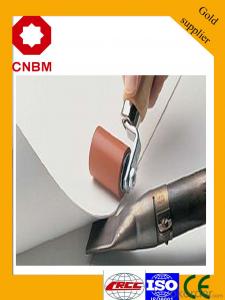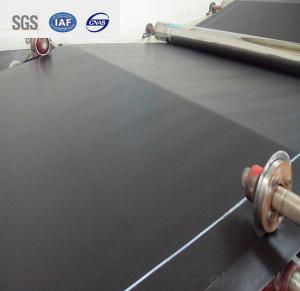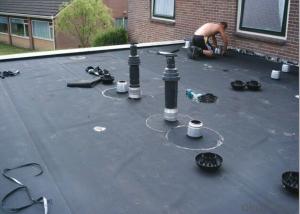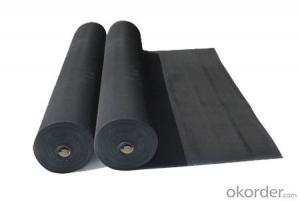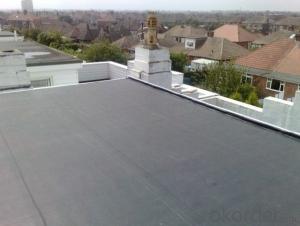Pondguard EPDM Waterproof Membrane with 2m 4m Width
- Loading Port:
- Qingdao
- Payment Terms:
- TT or LC
- Min Order Qty:
- 1000 m²
- Supply Capability:
- 100000 m²/month
OKorder Service Pledge
OKorder Financial Service
You Might Also Like
EPDM Coiled Rubber Waterproof Membrane for Ponds
Description for EPDM Rubber Waterproof Membrane :
GeoGard EPDM offers dependable performance for irrigation reservoirs, canals, aquaculture, dung pits, landfill covers,
waste water reservoirs, constructed wetlands, artificial snow reservoirs, storm water reservoirs, fire reservoirs and
large decorative ponds.
Main Features of EPDM Rubber Waterproof Membrane:
Artificial lakes
Golf course water features
Commercial decorative ponds
Residential decorative ponds
Reflection ponds
Streams, waterfalls and fountains
Swimming ponds
Natural swimming pools
Leisure park water features
Specifications of EPDM Rubber Waterproof Membrane:
Material | EPDM Rubber |
Size | 1.2m (width)*20m (length) or customized, weldable type 2.05m or 4m width |
Thick | 1.2mm, 1.5mm, 2.0mm |
Type | Vulcanized & Weldable |
Pattern | Non-reinforced (homogeneous) |
Certificate | ISO9001/14001 |
Training
The RubberGard EPDM Roofing System is exclusively installed by approved roofing contractors that have successfully completed a training program in one of training centers.EPDM Project References
Operating since 3 decades in Europe and Asia, our Products has installed hundreds of thousands of EPDM roofs. The project portfolio includes a selection of major projects.
Images of EPDM Rubber Waterproof Membrane:
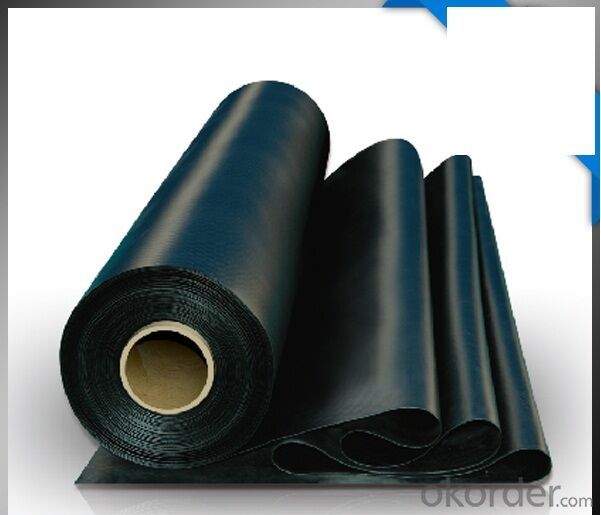
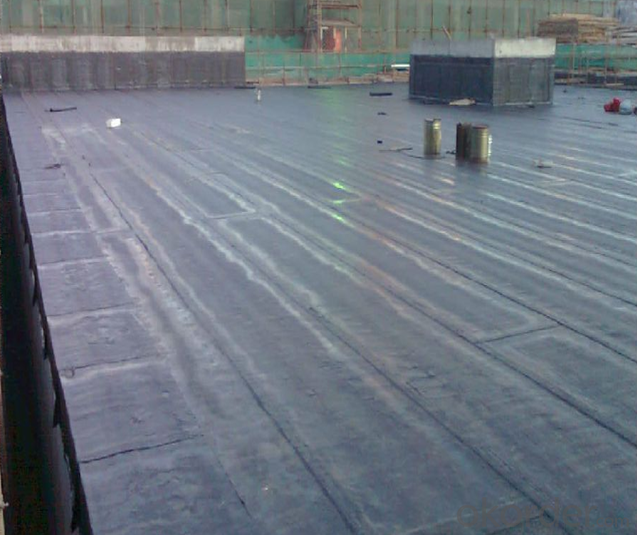
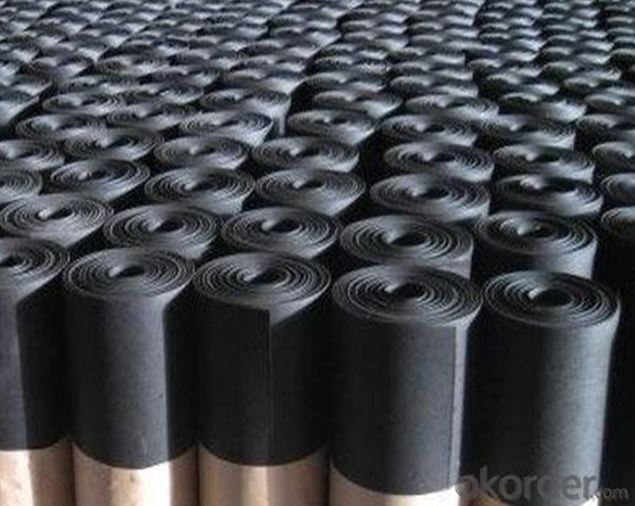
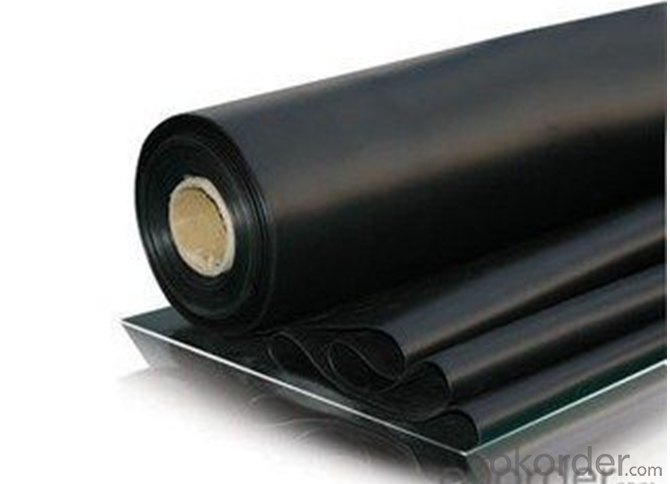
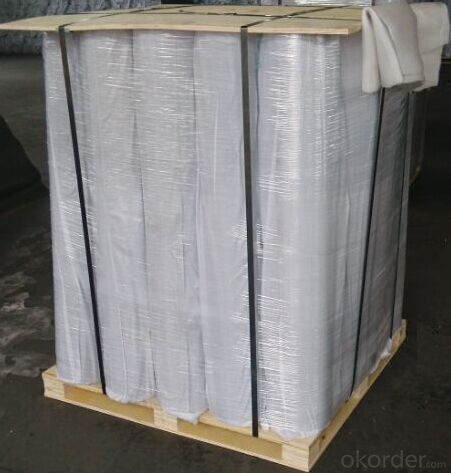
FAQ:
1. What are we supplying?
We are specialized in producing Colorful Asphalt Roof Shingle, SBS/APP modified bitumen waterproof membrane, Self adhesive bitumen waterproof membrane, PVC waterproofing membrane, EPDM rubber roofing membrane, Single Component Polyurethane Waterproof Coating, and Spray Polyurea Waterproof Coating
.
2. How Many years experience do we have?
We have been exported to more than 20 countries in the past 15 years.
3. How long do we usually reply your request?
We always reply our customer within 24 hours.
- Q: Can a waterproofing membrane be used for bathrooms or showers?
- Yes, a waterproofing membrane can be used for bathrooms or showers. It is designed to create a protective barrier against water damage, ensuring that the walls, floors, and other surfaces remain dry and free from moisture penetration. This helps to prevent mold, mildew, and structural issues caused by water leakage, making it an essential component in bathroom and shower construction or renovation.
- Q: Can waterproofing membranes be used on rooftop terraces?
- Yes, waterproofing membranes can be used on rooftop terraces to protect them from water damage and ensure their longevity.
- Q: Are waterproofing membranes resistant to mold and mildew?
- Waterproofing membranes exhibit resistance to mold and mildew in general. Their purpose is to establish a barrier against moisture, halting its infiltration into the structure and thwarting the growth of mold and mildew. These membranes are commonly crafted from materials like rubber, PVC, or bitumen, which do not foster the development of mold and mildew. Moreover, they are installed in a manner that guarantees effective drainage and ventilation, further diminishing the likelihood of mold and mildew formation. However, it is crucial to bear in mind that although waterproofing membranes significantly decrease the risk of mold and mildew, they are not infallible. It remains imperative to maintain adequate ventilation and promptly address any water leaks or damage to prevent the growth of mold and mildew.
- Q: DTM.E polyester composite waterproofing membrane, cheaper than the asphalt membrane?
- Ouwei Jianke DTM.E polyester composite waterproofing membrane is the company according to GB50207-2002 "roofing quality acceptance norms", GB50108-2008 "underground engineering waterproof technical specifications", GB50208-2002 "underground waterproofing project quality acceptance norms" and Other waterproof engineering design Widely used in a new type of waterproof material,
- Q: Can a waterproofing membrane be used in areas with high foot traffic or heavy loads?
- A waterproofing membrane is viable for use in areas subjected to heavy foot traffic or substantial loads. These membranes are created to serve as a protective barrier against water infiltration and can withstand different forms of stress, including foot traffic and heavy loads. However, it is imperative to select a waterproofing membrane that is explicitly designed for such circumstances. Multiple membrane options are available, each possessing varying levels of durability and strength. It is of utmost importance to seek guidance from a professional waterproofing expert or manufacturer to ensure that the chosen membrane is suitable for the specific requirements of the high foot traffic or heavy load area. Proper installation and maintenance of the membrane are also crucial for its long-term effectiveness in these conditions.
- Q: Does a waterproofing membrane require any special maintenance?
- Yes, a waterproofing membrane does require some special maintenance. While it is designed to be durable and withstand various weather conditions, regular maintenance is necessary to ensure its effectiveness and longevity. Some maintenance tasks include: 1. Regular inspections: Check the membrane for any signs of damage, such as cracks, tears, or punctures. Inspect the seams and edges to ensure they are properly sealed. 2. Clean the surface: Remove any debris, dirt, or vegetation that may have accumulated on the membrane. This can be done using a broom, brush, or pressure washer (if recommended by the manufacturer). 3. Clear drains and gutters: Ensure that the drains and gutters connected to the membrane are not clogged or blocked. This will prevent water from pooling on the surface and potentially causing damage. 4. Repair any damages: If any cracks, tears, or punctures are found, they should be repaired promptly to prevent water leakage. Follow the manufacturer's instructions for the appropriate repair method and materials. 5. Regularly check the waterproofing system: If the membrane is part of a larger waterproofing system, such as a basement or roof, it is important to inspect and maintain the entire system. This may involve checking the integrity of other components, such as drainage pipes or flashing. 6. Consider professional maintenance: Depending on the size and complexity of the waterproofing system, it may be beneficial to hire a professional maintenance service. They can conduct thorough inspections, perform necessary repairs, and provide expert advice on maintaining the membrane. By following these maintenance practices, you can ensure that your waterproofing membrane remains in good condition and effectively protects your structure from water damage.
- Q: Can a waterproofing membrane be used for convention centers or exhibition halls?
- Yes, a waterproofing membrane can be used for convention centers or exhibition halls. Waterproofing membranes are commonly used in construction to protect buildings from water damage and leakage. Given the potential for water infiltration in large spaces like convention centers or exhibition halls, using a waterproofing membrane can help ensure the integrity and durability of the structure by preventing water penetration and potential damage.
- Q: Are waterproofing membranes suitable for residential applications?
- Yes, waterproofing membranes are suitable for residential applications. They are commonly used in various areas of residential construction, such as basements, foundations, roofs, bathrooms, and balconies, to prevent water penetration and protect the building structure from moisture damage. Waterproofing membranes provide a barrier against water, preventing it from seeping into the structure and causing issues like mold, rot, or structural damage. These membranes are typically made of materials like bitumen, PVC, EPDM, or polyurethane, which are highly effective in repelling water. In residential constructions, waterproofing membranes are installed during the building process or as a part of renovation projects. They can be applied as a liquid coating or in the form of sheets that are laid down and adhered to the surface. These membranes create a seamless and durable barrier that can withstand the test of time. Additionally, waterproofing membranes offer various benefits for residential applications. They help maintain a dry and comfortable living environment by preventing water leaks and dampness. This, in turn, protects the integrity of the building materials, prolongs the lifespan of the structure, and reduces the risk of costly repairs. Furthermore, waterproofing membranes can also enhance energy efficiency by reducing moisture-related heat loss or gain. By preventing water infiltration, they help maintain consistent temperatures inside the house, resulting in lower energy consumption and utility bills. Overall, waterproofing membranes are an excellent choice for residential applications. They provide reliable protection against water damage, improve the longevity of the structure, and contribute to a healthier and more energy-efficient living environment.
- Q: Can a waterproofing membrane be used on rubber surfaces?
- Yes, a waterproofing membrane can be used on rubber surfaces.
- Q: Can a waterproofing membrane be installed on curved surfaces?
- Yes, a waterproofing membrane can be installed on curved surfaces. The flexibility and stretchability of the membrane allow for easy installation and adaptation to different surface shapes, including curved surfaces.
Send your message to us
Pondguard EPDM Waterproof Membrane with 2m 4m Width
- Loading Port:
- Qingdao
- Payment Terms:
- TT or LC
- Min Order Qty:
- 1000 m²
- Supply Capability:
- 100000 m²/month
OKorder Service Pledge
OKorder Financial Service
Similar products
Hot products
Hot Searches
Related keywords
